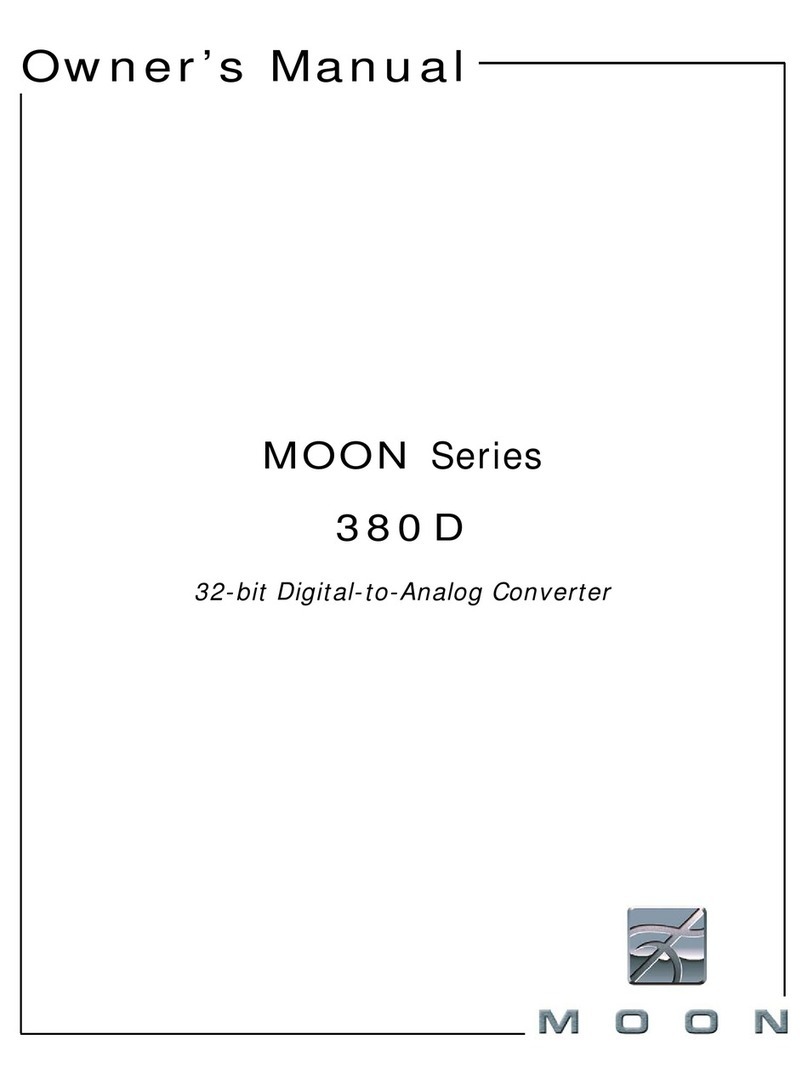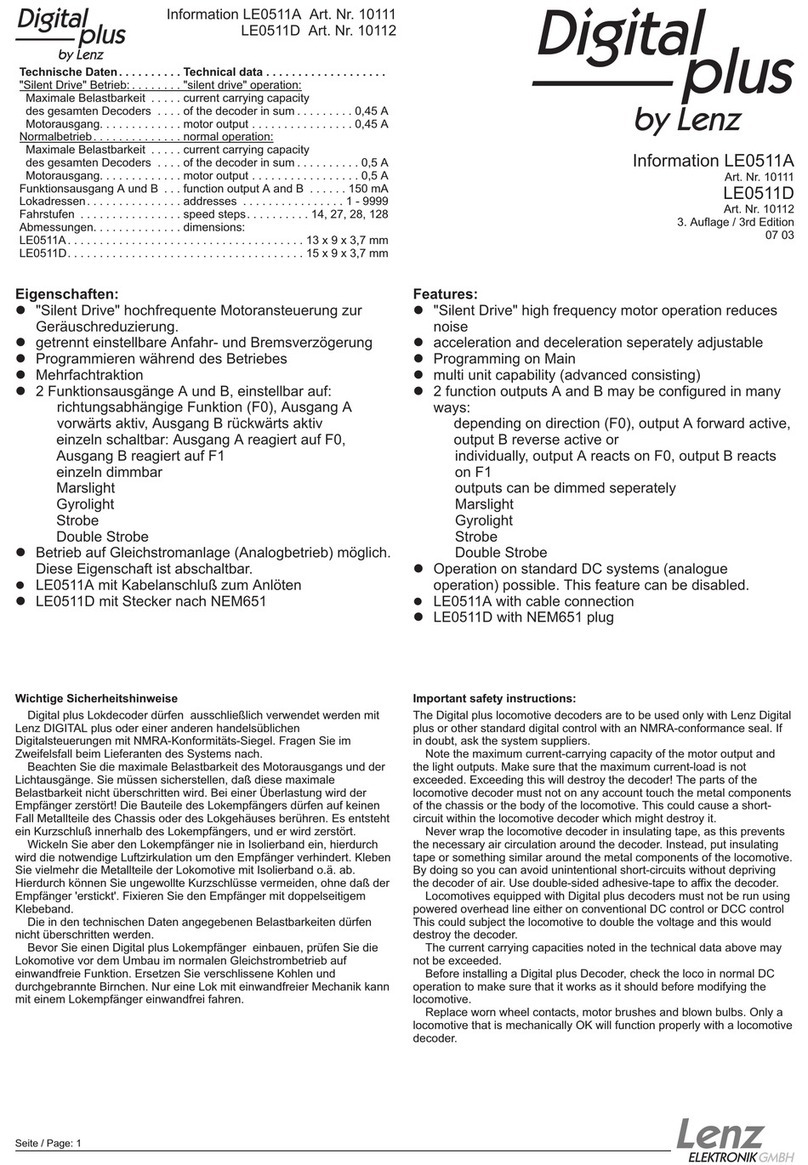Simaudio MOON 260D User manual

CD Transport and optional 32-bit D/A Converter
Owner’s Manual
MOON 260D

260D- Owner’s Manual
=
=
=
ATTENTION
Do not ingest the battery, Chemical Burn Hazard
The remote control supplied with this product contains a
coin/button cell battery.
If the coin/button cell battery is swallowed, it can cause
severe internal burns in just 2 hours and can lead to
death.
Keep new and used batteries away from children.
If the battery compartment does not close securely, stop
using the remote control and keep it away from children.
If you think batteries might have been swallowed or
placed inside any part of the body, seek immediate
medical attention.

=
=
=
=
Important Safety Instructions
1. Read these instructions.
2. Keep these instructions.
3. Heed all warnings.
4. Follow all instructions.
5. Do not use this apparatus near water.
6. Clean only with a dry cloth.
7. Do not block ventilation openings. Install in
accordance with the manufacturer’s instructions.
8. Do not install near any heat sources such as
radiators, heat registers, stoves or another
apparatus that produces heat.
9. Do not defeat the safety purpose of the
polarized or grounding type plug. A polarized
plug has two blades with one wider than the
other. A grounding-type plug has two blades
and a third grounding prong. The wide blade or
the third prong is provided for safety. If the
provided plug does not fit into the outlet,
consult an electrician for replacement of the
obsolete outlet.
10. Protect the power cord from being walked on or
pinched, particularly at plugs, convenience
receptacles, and the point where they exit from
the apparatus. Unplug mains cord during
transportation.
11. Only use attachments and accessories specified
by the manufacturer.
12. Use only with the cart, stand, tripod, bracket, or
table specified by the
manufacturer or sold with the
apparatus. When a cart is used,
use caution when moving the cart/apparatus
combination to avoid injury from tip over.
13. Unplug this apparatus during lightning storms or
when unused for long periods of time.
14. Refer all servicing to qualified service personnel.
Servicing is required when the apparatus has
been damaged in any way, such as when the
power cord or plug has been damaged; liquid
has been spilled or objects have fallen into the
apparatus; or the apparatus has been exposed to
rain or moisture, does not operate normally, or
has been dropped.
15. No naked flame sources, such as candles, should
be placed on the apparatus.
WARNING:
TO REDUCE THE RISK OF FIRE OR ELECTRIC SHOCK, DO
NOT EXPOSE THIS APPLIANCE TO RAIN OR MOISTURE.

260D- Owner’s Manual
=
=
=
Important Safety Instructions (cont’d)
The lightning flash with the arrowhead symbol, within an equilateral triangle, is intended to alert the
user to the presence of uninsulated “dangerous voltage” within the product’s enclosure that may be
of sufficient magnitude to constitute a risk of electric shock to persons.
The exclamation point within an equilateral triangle is intended to alert the user to the
presence of important operating and maintenance (servicing) instructions in the literature
accompanying the appliance.
Marking by the “CE” symbol (shown left) indicates compliance of this device with the EMC
(Electromagnetic Compatibility) and LVD (Low Voltage Directive) standards of the European
Community
Please read all instructions and precautions carefully and completely
before operating your MOON 260D CD Transport/DAC.
1. ALWAYS disconnect your entire system from
the AC mains before connecting or
disconnecting any cables, or when cleaning
any component. To completely disconnect
this apparatus from the AC mains, disconnect
the power supply cord plug from the AC
receptacle.
2. The MOON 260D must be terminated with a
three-conductor AC mains power cord which
includes an earth ground connection. To
prevent shock hazard, all three connections
must ALWAYS be used. Connect the MOON
260D only to an AC source of the proper
voltage; Both the shipping box and rear
panel serial number label will indicate the
correct voltage. Use of any other voltage will
likely damage the unit and void the warranty
3. AC extension cords are NOT recommended
for use with this product. The mains plug of
the power supply cord shall remain readily
accessible.
4. NEVER use flammable or combustible
chemicals for cleaning audio components.
5. NEVER operate the MOON 260D with any
covers removed. There are no user-
serviceable parts inside. An open unit,
especially if it is still connected to an AC
source, presents a potentially lethal shock
hazard. Refer all questions to authorized
service personnel only.
6. NEVER wet the inside of the MOON 260D
with any liquid. If a liquid substance does
enter your MOON 260D, immediately
disconnect it from the AC mains and take it
to your MOON dealer for a complete check-
up.
7. NEVER spill or pour liquids directly onto the
MOON 260D.
8. NEVER block air flow through ventilation
slots or heatsinks.
9. NEVER bypass any fuse.
10. NEVER replace any fuse with a value or type
other than those specified
11. NEVER attempt to repair the MOON 260D.
If a problem occurs contact your MOON
dealer.
12. NEVER expose the MOON 260D to
extremely high or low temperatures.
13. NEVER operate the MOON 260D in an
explosive atmosphere.
14. ALWAYS keep electrical equipment out of
reach of children.
15. ALWAYS unplug sensitive electronic
equipment during lightning storms.
16. WARNING: Do not expose batteries or
battery pack to excessive heat such as
sunshine, or fire or the like

Table of Contents
Introduction
6
Unpacking
7
Installation & Placement
7
Front Panel Controls
8
Rear Panel Connections
10
SimLink™
11
Balanced Operation
11
Operating the 260D
11
Remote Control Operation
12
Specifications
14
www.simaudio.com
Simaudio Ltd., 1345 Newton Road
Boucherville, Québec J4B 5H2 CANADA
Date Code: 20240202

260D- Owner’s Manual
=
=
6=
Introduction
Thank you for selecting the MOON MOON 260D CD
Transport as a part of your music/cinema system.
This component has been designed to offer state-of-
the-art high-end performance in an elegant package,
while retaining all the sonic hallmarks on which
Simaudio has made its reputation. We have spared
no effort to ensure that it is amongst the finest CD
Transports available in its class. We have been
building high-performance audio equipment for
over 30 years, and the know-how gained through
our cumulative experience is an important reason
why MOON digital audio products are so musically
satisfying.
The performance of your MOON 260D will continue
to improve during the first 400 hours of listening.
This is the result of a “break-in” period required for
the numerous high quality electronic parts used
throughout this CD Transport.
Before setting up your new 260D, we encourage you
to please read this manual thoroughly to properly
acquaint yourself with its features. We hope you
enjoy listening to the MOON 260D CD Transport as
much as the pride we have taken in creating this fine
audio product. We understand the power and
emotion of music and build our products with the
goal of faithfully capturing these elusive qualities.
The information contained in this manual is subject
to change without notice. The most current version
of this manual is available on our official website at
http://www.simaudio.com
Your MOON 260D CD Transport incorporates many
significant design features to achieve its “world
class” level of performance. This is an abbreviated
list of the more important features:
Proprietary CD drive system with in-house developed
hardware & software.
CD drive system mounted on our M-Quattro gel-based 4-
point floating suspension for vibration damping, allowing
ambient and spatial cues in your recordings to come to life
like never before.
Two (2) digital outputs – S/PDIF and AES/EBU.
Oversized power supply with up to 13 stages of voltage
regulation (5 for Transport and 8 for the DAC).
RS-232 port for (i) full unsolicited bidirectional feedback
and (ii) firmware updates; IR input for external control
with aftermarket infrared remote control receivers and
SimLinkTM controller ports that allow for 2-way
communications between other MOON components.
Rigid chassis construction to minimize the effects of
external vibrations.
With Optional Digital-to-Analog Converter:
32-bit asynchronous DAC.
Three (3) digital inputs (S/PDIF x 2 & TosLink x 1)
allowing for a connection to virtually any digital source.
Advanced analog signal path using a DC servo circuit and
proprietary analog filter..

=
=
=
7
Unpacking
The MOON 260D CD Transport should be removed from its box with care.
The following accessories should be included inside the box with your CD Transport:
ü
AC power cable
ü
‘‘CRM-3’ remote control with two ‘CR-2032’ batteries
ü
‘SimLink™’ cable with 1/8” mini plug terminations on each end
ü
This owner’s manual
ü
Warranty and product registration information (USA and Canada only)
Once the MOON 260D is unpacked, inspect it thoroughly and report any damage to your dealer
immediately. We suggest that you keep all of the original packaging, storing it in a safe, dry place in case
you’re required to transport this product. The customized packaging is specially designed to protect the
260D from any potential damage during transit.
Please write the serial number of your new MOON 260D in the space provided below for future reference.
Serial Number
Installation & Placement
The MOON 260D requires only minimal ventilation
to maintain an optimum and consistent operating
temperature. However, you should avoid placing it
near a heat source as this could compromise the CD
Transport’s performance and reliability. As well, it
should be placed on a solid level surface. The 260D
uses a toroidal transformer; even though it is well
shielded, you should not place the CD Transport too
close to source components sensitive to EMI, such as
a turntables.
Compact discs are easily damaged, and must be kept
very clean. Always store them in their cases. Dirty or
finger-marked discs will reproduce music poorly.
Moreover, the transport may even mute parts of a
track, or be unable to find some tracks. If you need
to clean a CD remember to use a soft lint-free cloth,
using a radial action (i.e. starting from the center and
aiming towards the edges). Do not attempt to clean
a compact disc using a rotating motion.

260D- Owner’s Manual
=
=
8
Front Panel Controls
Figure 1: MOON 260D Front panel
The front panel will look similar to Figure 1 (above). The large digital display window indicates the track
number of the compact disc currently playing (or the total number of tracks in stop mode) and
corresponding time information. For units equipped with the optional 32-bit DAC, the display will indicate
the selected digital input (“D1” thru “D4”) and the corresponding sampling frequency in kHz (“44.1” thru
“192.0”) of the source material currently being played.
The “Standby” button disengages all internal circuitry
from the power supply, except for the controller
circuit and the IR receiver. The blue indicator LED
turns off when the MOON 260D is in “Standby”
mode. The 260D will automatically go into standby
mode after approximately 20 minutes of inactivity.
However, you can disable this automatic standby
feature by pressing and holding the “Program”
button for two seconds until “0 EuP” appears in the
display window. To revert back to the default mode,
simply repeat this operation; press and hold the
“Program” button for two seconds until appears
“1 EuP” in the display window.
The “Program” button allows you to program a
selection of tracks to play in any desired order. After
loading a compact disc into the MOON 260D, select
the first track you wish to listen to, using the 9 or :
buttons and then press “Program”. To program a
second track, select it the same way you did for the
first one and press “Program” again. Repeat this
operation as many times as you want to program
tracks to a maximum of 30 tracks. Once you’ve
completed programming your track selection(s), the
digital display window will show the number of
tracks that have been programmed and their total
time. To begin playing your programmed selections,
simply press the u button. Pressing ¢ will only
suspend the playing of the programmed selection.
Pressing ¢ a second time will clear your program
selection from the 260D’s memory. As well, opening
the top drawer at any time will also clear your
program.
After you begin creating your program list, the LED
immediately to the left of the “Program” button will
illuminate and remain on until you clear your
program from memory.
The “Display” button allows you to turn the digital
display on and off.
Pressing the “Repeat” button once results in the
entire disc being played again once it has reached
the end of the final track. Pressing “Repeat” a
second time will result in the track currently playing
being repeated again once it has ended. To cancel
this mode, simply press the “Repeat” button a third
time or open the CD drawer. There are two (2) LED’s
located to the left of the “Repeat” button; The top
one will illuminate when the current track is being
repeated and both will illuminate when the entire
disc is being repeated. If you have created a

=
=
=
9
program of selected tracks, pressing “Repeat” once
will result in your entire program repeating itself
once it has completed its cycle; Pressing “Repeat” a
second time will result in the current track from your
program being played again once it has ended;
Pressing “Repeat” a third time will terminate the
“Repeat” mode.
For units equipped with the optional 32-bit DAC, the
“Input” button is used to select an external digital
source by sequentially scrolling through three (3)
digital inputs: D1 and D2 use an RCA connector for a
S/PDIF digital signal, and D3 uses a TosLink
connector for an optical digital signal. When you
change inputs, the display window will show the new
digital input and briefly, four (4) dashes “----”. These
dashes indicate that the MOON 260D is in the
process of locking onto a digital signal – this may
take several seconds.
Once the MOON 260D successfully locks onto the
digital signal, the four dashes will be replaced by the
sampling rate frequency of this digital signal. When
the DAC cannot lock onto the selected digital input
signal, “----” remains in the display window. The
260D’s DAC is capable of processing a digital signal
at one of the following six (6) different sampling
rates: “44.1”, “48.0”, “88.2”, “96.0” , “176.4” and
“192.0” (all in kHz). To return to the disc input,
continue pressing the “Input” button; the disc input
follows the “D3” input.
The “Random” button, when pressed, will play each
of the tracks on a compact disc in a completely
random order, as opposed to the sequential order as
they appear on the disc. If you have already created
a program of selected tracks, it will play these
programmed tracks in a random order. The LED
located immediately to the left of the “Random”
button will illuminate when you’ve engaged the
random mode.
The “Time” button allows you to scroll through the
four (4) different display modes for time related
information. Each time you press the “Time” button,
the system scrolls to the next time information
mode. By default, the MOON 260D will display the
elapsed time of the track currently playing. The
scrolling order is as follows:
1. Elapsed time of the current track
2. Remaining time of the current track
3. Elapsed time of the entire disc (or program)
4. Remaining time of the entire disc (or program)
If you want to turn the display off, press and hold
the “Display” button for 3 seconds. When the
display is turned off, it will still come back on for a
short period of time whenever you press any of the
buttons located on the front panel or the remote
control; the display will automatically turn off again
once you are done.

260D- Owner’s Manual
=
=
10
To turn the display back on, simply press and hold
the “Display” button for 3 seconds. Finally, the
display mode that you select will continue to be
used until you either select another mode or power
down the MOON 260D using the main power switch
located on the rear panel.
To load a compact disc into the MOON 260D, press
p to open the drawer. While the drawer is opened,
four (4) dashes “----” will appear in the display. Place
the CD in the drawer with the label side facing up. To
close the drawer, press p again; Once the CD is
successfully read, the total number of tracks and
total playing time will appear in the display window.
As a result of various copy protection schemes, some
CDs will take longer to read than others.
When you load a CD that contains no musical tracks
(i.e. data only), the word ‘DATA’ will appear in the
display window. As well, if you load a disc that is not
compatible with the 260D (i.e. SACD, DVD-A, DVD-
Video etc), the phrase ‘NO DISC’ will appear in the
display window.
Finally, when you inadvertently leave the
drawer open, it will automatically close
after approximately three (3) minutes.
Press u to begin playing a compact disc. Pressing u
while a track is already playing will result in the
current track immediately playing again, starting
from the beginning. Press 9 to search backward or
: to search forward through the compact disc’s
tracks. When you’ve located the track number, press
u to begin playing that track. When you initiate a
forward or backward track change while a disc is
already playing, it will automatically start playing the
track you select; you need not press u.
Press; to pause the compact disc currently playing.
The disc will continue spinning and the laser will be
suspended in its current position. Press; a second
time or u to resume playing the disc. Press ¢ to
stop the compact disc from playing. The laser will
return to the start position of the disc.

=
=
=
11
Rear Panel Connections
Figure 2: MOON 260D Rear panel
The rear panel will look similar to Figure 2 (above). The analog outputs are on the left side; There are two
pairs, “Right” and “Left”, each with a single-ended RCA and balanced XLR connector. These are “Fixed Level”
outputs, intended to be connected to a line-level input on either your preamplifier or integrated amplifier.
We strongly recommend that you use the balanced XLR connectors on your 260D to maximize its level of
performance. Both pairs of analog outputs can be used simultaneously if required. Don’t hesitate to use
high quality interconnect cables*. Poor quality interconnect cables can degrade the overall sonic
performance of your system.
Next is a group of three (3) “Digital Inputs” labelled
“D1” through “D3”. Inputs “D1” and “D2” are S/PDIF
on RCA connectors, benefitting most from cables
with an impedance of 75W. Input “D3” is Optical and
uses a Toslink connector. Next, are two digital
outputs; AES/EBU on a XLR connector (that benefits
most from a 110W digital audio cable terminated
with XLR connectors) and SPDIF on an RCA
connector. Don’t hesitate to use high quality digital
interconnect cables*.
The right side of the rear panel has various
connectors for external communications. The MOON
260D is equipped with full-function bi-directional
RS-232 port control and status for custom
integration or automation, as well as future software
updates. Next to the RS-232 port are two (2)
“SimLink™” connectors labeled “in” and “out” on 1/8”
mini jacks. Please refer to the next section entitled
SimLink™ for more details. Then there is a 1/8” mini-
jack input for use with aftermarket infrared remote
control receivers.
Finally on the far right side is the main power switch
(“0”=off, “1”=on), the IEC receptacle, labeled “AC
Input” for the included AC power cord, and the “AC
Fuse” socket cover. Connect the supplied AC power
cable to the IEC receptacle. Ensure that the AC wall
outlet you use has a functioning ground. For the
best sonic performance, it is preferable that you plug
your 260D directly into a dedicated AC outlet and
avoid using an extension cord.
* Please speak with your MOON Authorized Retailer about
the benefits of high quality cables for your system.

260D- Owner’s Manual
=
=
12
SimLink™
The SimLink™ provides communication features
between various MOON components. For example,
if you were to connect the 260D to the 260D via the
SimLink™, pressing the u (play) button on the 260D
will cause the 260D to automatically switch to the
input labelled ‘CD’.
The main feature of SimLink™ on the MOON 260D,
involves the “Standby” function. By pressing down
and holding the “Standby” button for 2 seconds on
the 260D, all other MOON components connected
via the SimLink will go into “Standby” mode along
with the 260D. The same logic applies when
switching from “Standby” to active mode.
The connection rules for the SimLink™ are very
straightforward. You must always connect the
supplied cable between one component’s “SimLink™
Out” jack and another component’s “SimLink™ In”
jack. If you inadvertently connect the cable between
either two “SimLink™ In” or two “SimLink™ Out”
jacks, the SimLink™ communication feature may not
function. Also, there is no master component in a
SimLink™ chain; no one particular component
operates as the main communications controller. If
you are using your MOON 260D with an older
MOON product such as a P-7, P-8 or i-7, you will
need to update the software of the older product to
allow for complete SimLink™ functionality. Contact
your retailer for further details.
Operating the MOON 260D
Turning on your MOON 260D for the first time
Prior to turning the CD Transport on for the first
time, make sure that every cable is properly
connected to avoid any problems.
Flick the main rocker switch, located on the rear
panel, labeled “POWER” to the ‘1’ (on) position. Next,
briefly press the push button labeled “Standby”
located on the front panel. You will hear a very faint
click sound confirming that everything is in order.
The blue LED on the front panel will illuminate,
indicating that the 260D is now powered up and
ready for use.
On and Off Sequence
To avoid having any annoying noises (ie. “thumps”
and “pops”) emanate from your speakers when
powering your 260D on or off, you should always
power up your 260D before powering up your
preamplifier, integrated amplifier or power amplifier.
As well, always power down your 260D after
powering down your preamplifier, integrated
amplifier or power amplifier.
Balanced Operation
When using an unbalanced interconnect, the audio
signal runs through both the center wire and the
shield/ground wire. Any noise picked up by this
interconnect (ie. nearby magnetic fields such as an
AC power cord) will be reproduced by both the
preamplifier and amplifier, then heard through the
loudspeakers. Conversely, a balanced interconnect
has three separate conductors; one for the ground
and two for the actual signal. These two signals are
identical except that one is 180 degrees out of phase
with the other. For example, when one conductor is
carrying a signal of +4 Volts, the other will be
carrying a signal of –4 Volts. When these two
inverted signals on a balanced line are output from
the MOON 260D, any noise picked up by the
interconnect will be eliminated since a differential
circuit amplifies only the difference between these
two signals: Noise on a balanced interconnect will be
equal on both conductors and therefore cancel out.

=
=
=
13
Remote Control Operation
The MOON 260D CD Transport uses the ‘CRM-3’ full-function remote control
(figure 3). It operates on the Philips RC-5 communication protocol and can be
used with other MOON components.
The ‘CRM-3’ remote uses two CR-2032 batteries (included). ). To install them,
simply unscrew the two screws from the removeable lower section of the back plate then
slide downwards to remove the plate; insert the batteries in the correct direction
and then replace the back plate and screws.
To engage the ‘CRM-3’ remote for use with the 260D CD Player, you must first
press the button labeled CD.
The (Power) button, located on the upper left, will switch the CD Player to
either ‘Stand by’ or ‘On’ mode.
Certain buttons found on this remote control perform identical functions to their
corresponding button located on the 260D’s front panel. Please refer to page 8
for a more detailed description of the “RDM”, “RPT” and “PROG” buttons.
0 thru 9 Direct access track number selection
OPEN Open/Close the Compact Disc drawer
DISPLAY Turns the front panel display on and off
¡ INPUT ¢ To switch from listening to the disc loaded in the player
to an external digital source connected to the player
¢ Stop playing the CD’s current track
; Pauses the player
u Play the compact disc loaded into the player
Press Once: Go back to the previous track on the disc
Press and hold: Scan backward through current track
Press Once: Skip to the next track on the disc
Press and hold: Scan forward through current track
Figure 3: CRM-3 Remote Control

For MOON 260D units equipped with the optional
32-bit DAC, you can sequentially scroll, either
backwards or forwards, through all four (4) available
inputs using the 2 buttons labelled ¡ INPUT ¢.
For example, to switch from “D3” to “D1” you may
either press ¡ INPUT three (3) times or press INPUT
¢ one (1) time. Pressing and holding down either of
these buttons results in only a single change to the
selected input.

=
=
=
15
Remote operation with multiple MOON components
Figure 4: Remote operation with SimLink™
In figure 4 we have a 180 MiND Music Streamer connected to a MOON 260D CD Transport via their
respective SimLink™ ports (using a 1/8” mini-jack cable), and the 260D connected to a 340i Integrated
Amplifier also via their respective SimLink™ ports. When you launch the MiND App on your Apple smart
device (full list on the MiND page of our website) and select this system’s ZONE, the 180 MiND, 260D and
340i will alll turn on. As well, the 260D, equipped with the optional DAC, will automatically switch to the
default MiND input “D1”. To shut down the system, press “Off” for this ZONE in the MiND app.
Figure 5: Remote Operation with SimLink™ and 12V Trigger
In figure 5 we have a MOON 260D CD Transport connected to a 350P Preamplifier via their respective
SimLink™ ports (using a 1/8” mini-jack cable), and the 350P is connected to a 330A Amplifier via their
respective 12V triggers (also using a 1/8” mini-jack cable). When you turn on the 260D via remote control
(or its Standby button), both the 350P and 330A will turn on automatically. The same rule applies when you
put the 260D into Standby mode.

260D- Owner’s Manual
=
=
16
Specifications
Configuration
Single-Ended
Digital Outputs (2)
S/PDIF (RCA), AES/EBU (XLR)
Remote Control
Full-Function CRM-3
Power Consumption in Standby
0.5 W
AC Power Requirements
120V / 60Hz or 240V / 50Hz
Shipping Weight
16 lb / 7.5 kg
Dimensions (W x H x D, inches / cm.)
16.9 x 3.4 x 13.1 / 42.9 x 8.6 x 33.3
Optional 32-bit Digital-to-Analog Converter:
Digital Filter / Digital-to-Analog Converter
32-bit
Frequency Response (full range)
2Hz - 100kHz +0/-3dB
THD @1kHz, 0dBFS (A-weighted)
0.005%
Intermodulation Distortion
0.005%
Dynamic Range
120dB
Signal-to-noise Ratio
120dB @ full output
Channel Separation
116dB
Intrinsic Jitter
1 picosecond RMS
Analog Outputs – Balanced / Single Ended
1 pair XLR / 1 pair RCA
Analog Output Impedance - XLR / RCA
75W
Analog Output @ 0dBFS - XLR / RCA
2.0 Volts
Bit-depth range / Sampling Frequency
16 to 24 bits / 44.1kHz to 192kHz
Digital Inputs (3)
2x S/PDIF (RCA), 1x TosLink
Balanced Pin Assignment:
Pin 1
Ground
Pin 2
Positive
Pin 3
Negative
NOTE: If you require the RS-232 codes for your MOON 260D, please visit the "Contact Us" page
and complete the "Information request" form on our website at www.simaudio.com.
Fuse Replacements:
F1 : 120V version uses a 0.2A slow blow (5x20mm)
230V version uses a 0.1A slow blow (5x20mm)
F2 : All versions use 0.5A slow blow (5x20mm)

Table of contents
Other Simaudio Media Converter manuals
Popular Media Converter manuals by other brands
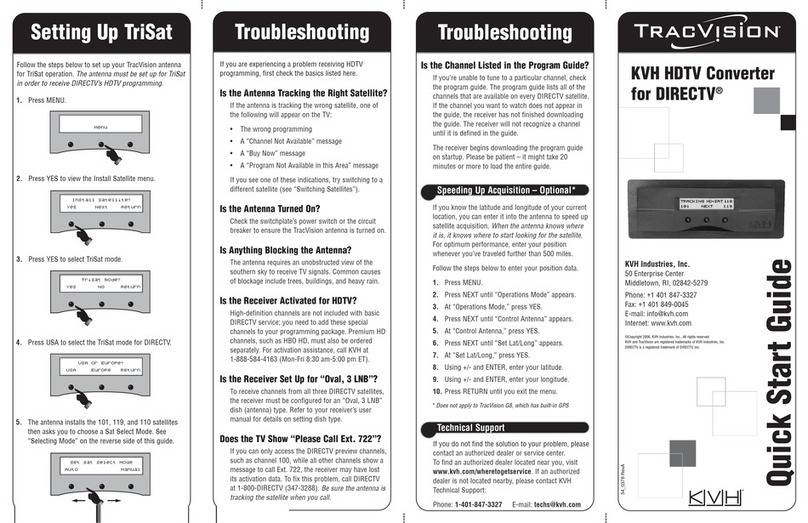
TracVision
TracVision KVH HDTV Converter for DIRECTV quick start guide

StarTech.com
StarTech.com IPUSB2VGAUE Spec sheet
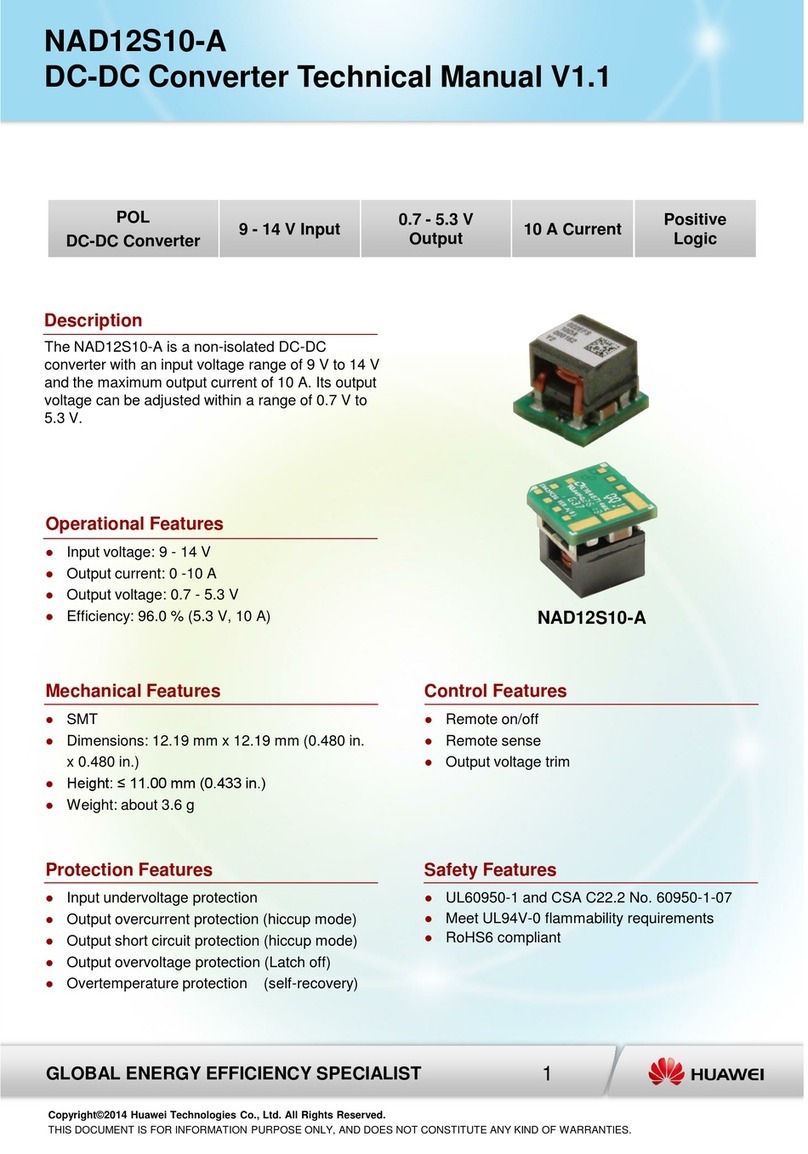
Huawei
Huawei NAD12S10-A Technical manual
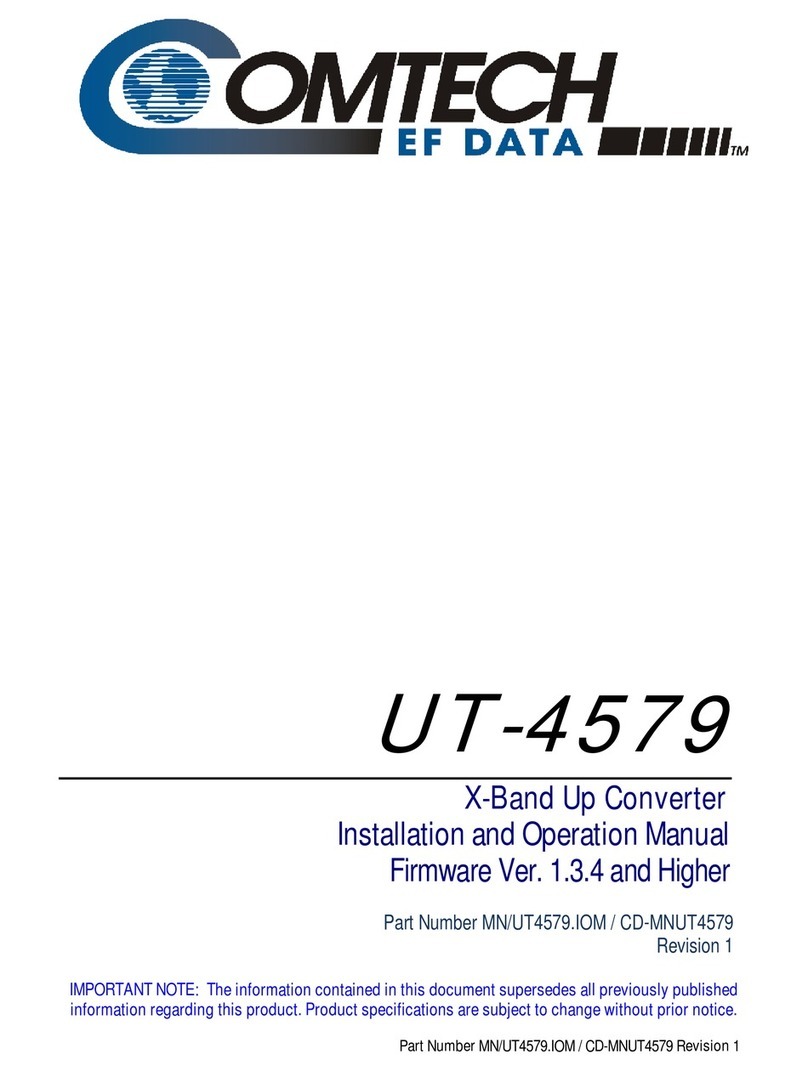
Comtech EF Data
Comtech EF Data UT-4579 Installation and operation manual

NTI
NTI ENVIROMUX-S420MA-24V installation guide
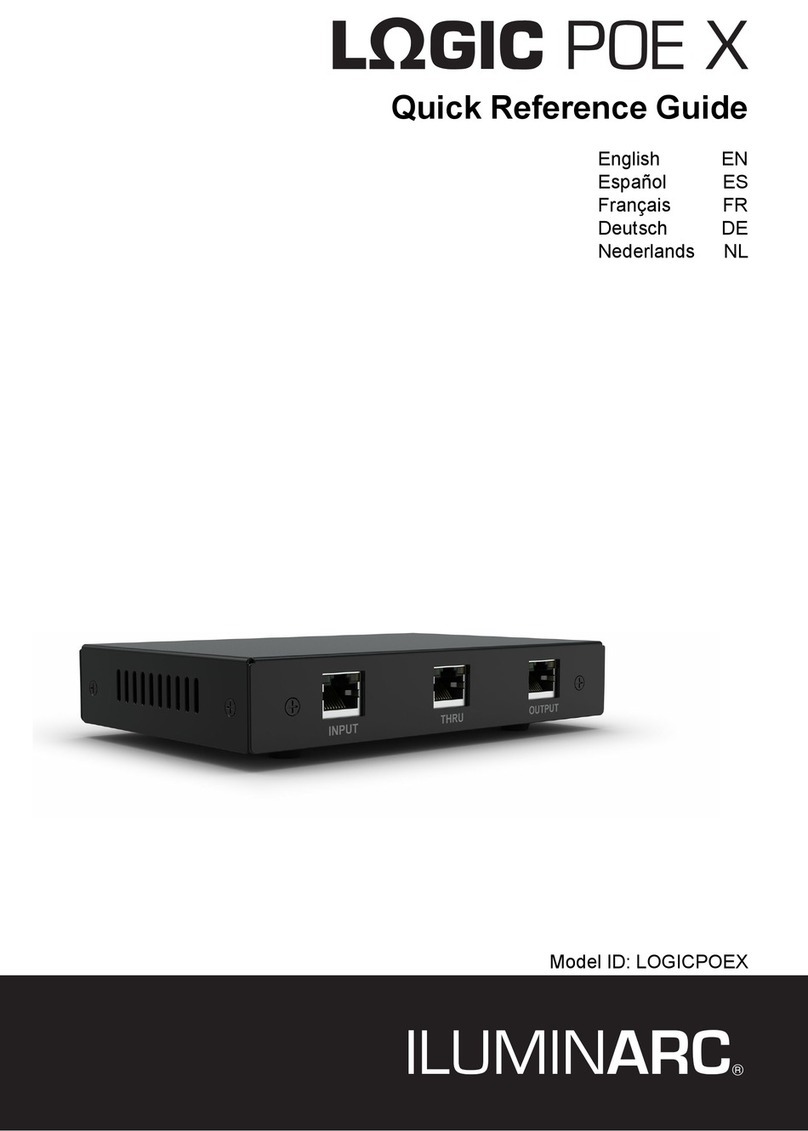
Iluminarc
Iluminarc LOGIC POE X Quick reference guide

Antennair
Antennair BATC DTX1 user guide

Ensemble Designs
Ensemble Designs Avenue 5230 manual
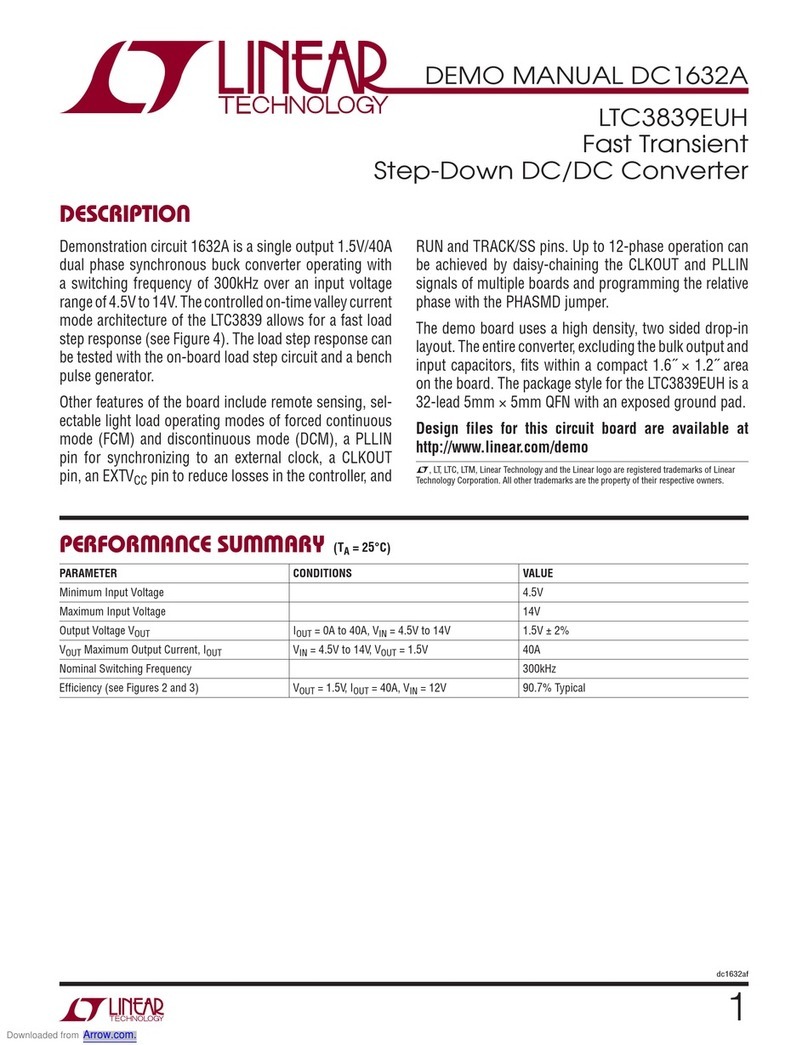
Linear Technology
Linear Technology LTC3839EUH Demo Manual
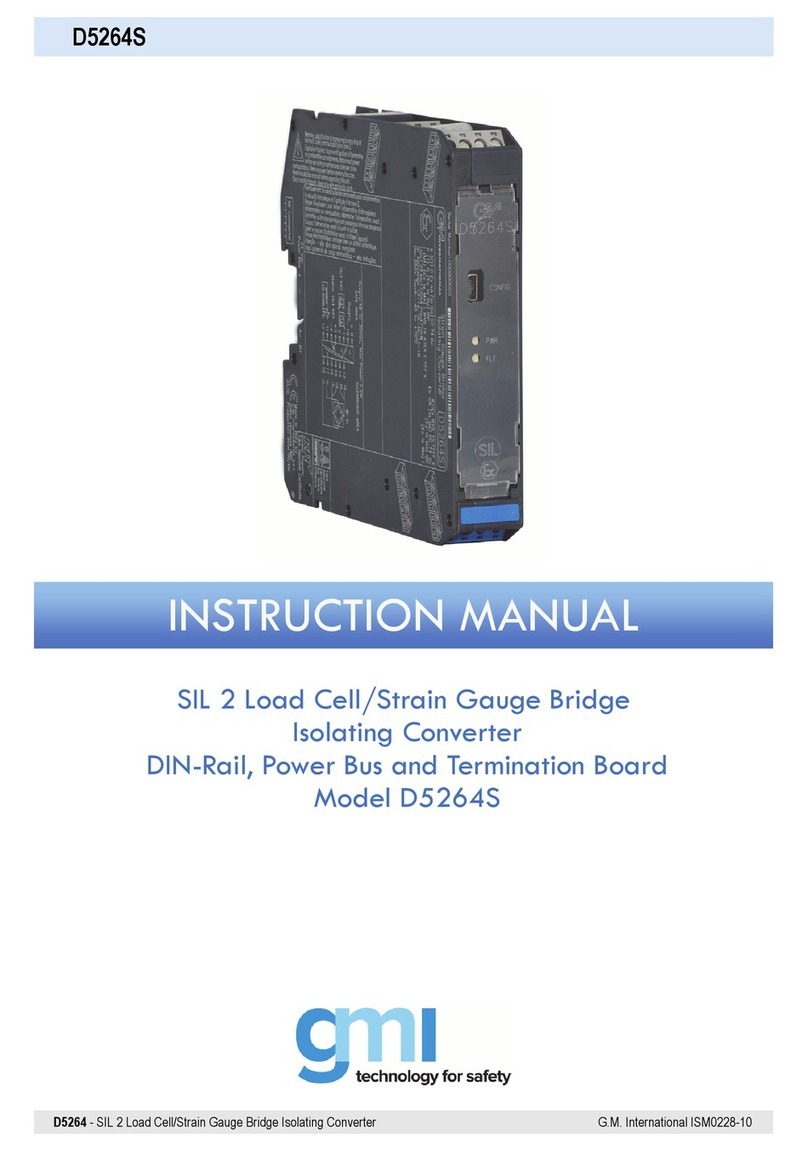
GMI
GMI D5264S instruction manual
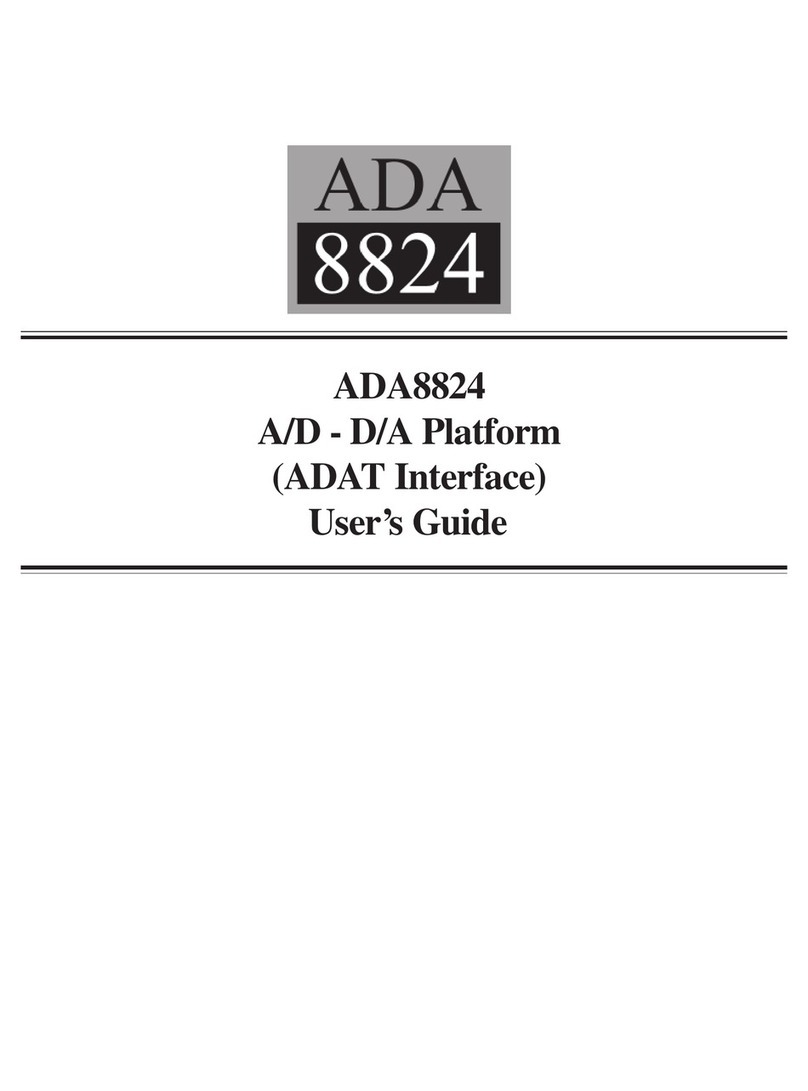
Lucid Technologies
Lucid Technologies ADA8824 user guide
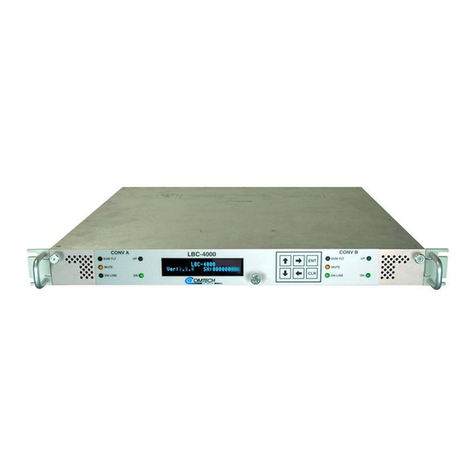
Comtech EF Data
Comtech EF Data MN/LBC4000.IOM Installation and operation manual

